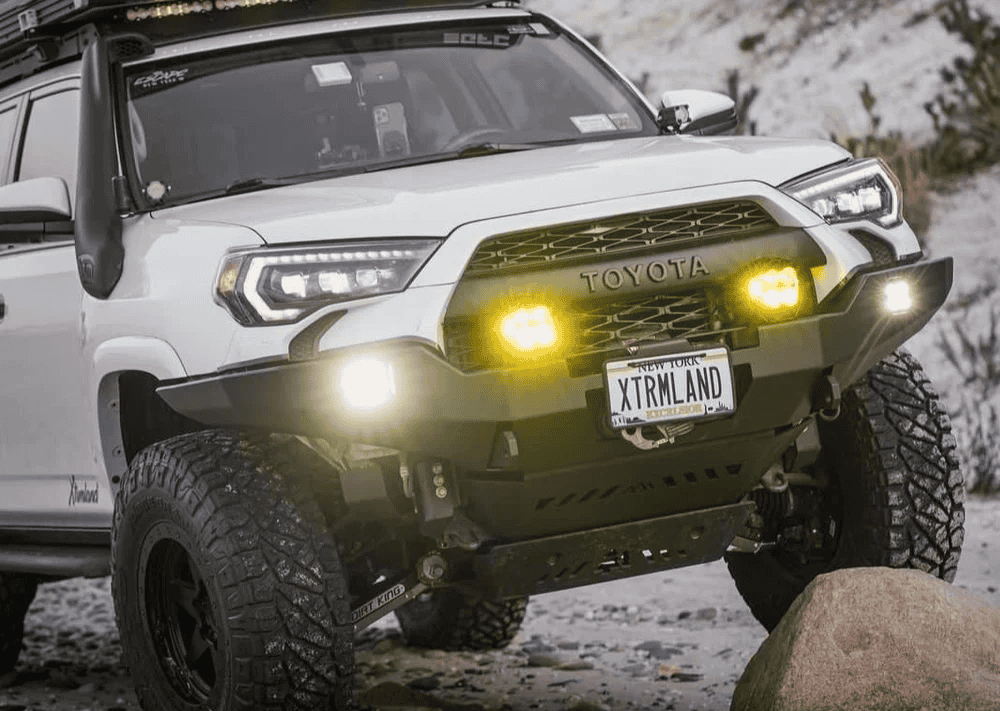Overland Vehicles

An overland build works best when it follows a sequence. Treat it like a trail map rather than a parts list. Begin with a clear mission and route profile. Daily mileage, seasons, group size, and vehicle platform shape everything that follows. A solo desert loop with long highway connections needs different equipment than a family trip across forest service roads in wet mountain weather.
Payload and weight distribution come first. Weigh the vehicle as it sits, then estimate the mass of passengers, fuel, water, tools, and cargo. Compare that total to the manufacturer payload rating and axle limits. This step protects braking distance, steering feel, and suspension geometry. It also helps prioritize what to bring and what to leave behind.
Electrical planning is next. List every device, its watts or amps, and expected hours of use. This guides battery capacity, charging inputs, and wiring. Water capacity follows the same approach. Plan for drinking, cooking, and cleanup with time between resupply. Storage layout should keep the heaviest items low and near the center. Quick access to recovery tools, first aid, and spare parts saves time when it matters.
Choose a platform that fits your mission and budget. Consider wheelbase, turn radius, factory gearing, towing needs, service network, and aftermarket support. Inspect cooling systems, brakes, and driveline condition. Baseline maintenance is part of stage one. Fresh fluids, belts, hoses, and filters create a reliable foundation. Add basic protection for vulnerable components such as skid coverage for the engine and transmission if your terrain requires it. Keep the vehicle close to stock height at this stage to preserve factory handling while you learn how it carries load.
Build your living and support systems before chasing aesthetic upgrades. Electrical comes first. A dual battery or lithium house bank with a smart charge strategy supports refrigeration, lights, and navigation. Combine charging sources to match your travel style. Alternator charging for drive days, solar for camp days, and shore power when parked at a site or home base. Install clean wiring, appropriate fusing, and cable routing that avoids heat and abrasion.
Water storage and filtration follow. Size tanks for your group and climate, then add food grade plumbing and an accessible fill point. Ventilation keeps moisture down and sleep quality up. Insulation and sound control calm the cabin and reduce fatigue. Thoughtful storage using drawers, tie down points, and soft bags keeps mass secure while allowing quick retrieval. A compact cook setup and safe heating solution round out this stage.
With weight and systems defined, tune the suspension to the actual load. Choose springs and shocks that match your final mass and travel goals rather than an aspirational number. Aim for controlled damping on washboard without harshness on pavement. Tires should fit real world needs, not only looks. Select a size that preserves gearing and braking. All terrain tread works for mixed use while mud terrain excels in clay and deep ruts at the cost of noise and wear.
Add recovery tools sized for your vehicle. A full size jack, traction boards, kinetic rope, rated shackles, and a proper mounting solution belong on the list. Armor and bumpers should be installed only if your routes demand them. Extra steel adds mass quickly, so focus on the weak points you will actually contact. Lighting upgrades should improve usable beam patterns rather than produce glare. Aim for balanced forward, fog, and work lighting that respects other trail users.
Now comes the field work. Plan short shakedown trips that mimic your longest planned days. Drive with full water and fuel. Note tire pressures that balance grip and ride. Track power consumption through cold nights and hot afternoons. Practice changing a tire with the exact tools you carry. Learn how long your fridge can hold temperature at camp with limited charging. Keep a log of what you used, what you never touched, and what failed.
Maintenance cycles change with off pavement travel. Dust calls for more frequent filter checks and careful sealing of storage. Mud and snow require regular brake inspection and attention to bearings. After each trip, torque suspension hardware, inspect bushings, and look for contact marks on underbody components. Adjust load placement for stability. Trim gear until only essentials remain. The result is a quiet, predictable truck or van that feels composed on long highway stretches and confident on rough tracks.
When you are ready to turn this plan into a finished rig, an experienced shop can compress timelines and avoid common pitfalls. For a deeper look at what a professional program includes, explore Overland rigs for capability benchmarks, dive into the Custom overland upfit process for complete or partial work, and read Why choose OZK to see how builds are planned, executed, and supported after delivery.
The team at OZK Customs listens first and builds second. That means your stage plan reflects your routes, season, group size, and budget rather than a generic package. Whether you need a quiet power system, a dialed suspension for constant load, or integrated storage that eliminates rattles, we design and install with serviceability in mind. Tell us where you are going and what you carry, and we will map the order of operations so every upgrade earns its place.
On your mark. Share your travel goals and timeline, and we will deliver a stage plan that brings your route to life with proven parts, clean fabrication, and a handoff that feels like a sendoff. Submit the form and let us build the rig you have been sketching in your notebook.
Ready for a proven build plan tailored to your terrain and timeline? Tell us how you travel, and our team will map your stages, budget, and delivery. Submit the form and let OZK turn your route into a rig that performs on day one.
ADDRESS:
6159 E Huntsville Rd, Fayetteville, AR 72701
PHONE:
(479) 326-9200
EMAIL:
info@ozkvans.com